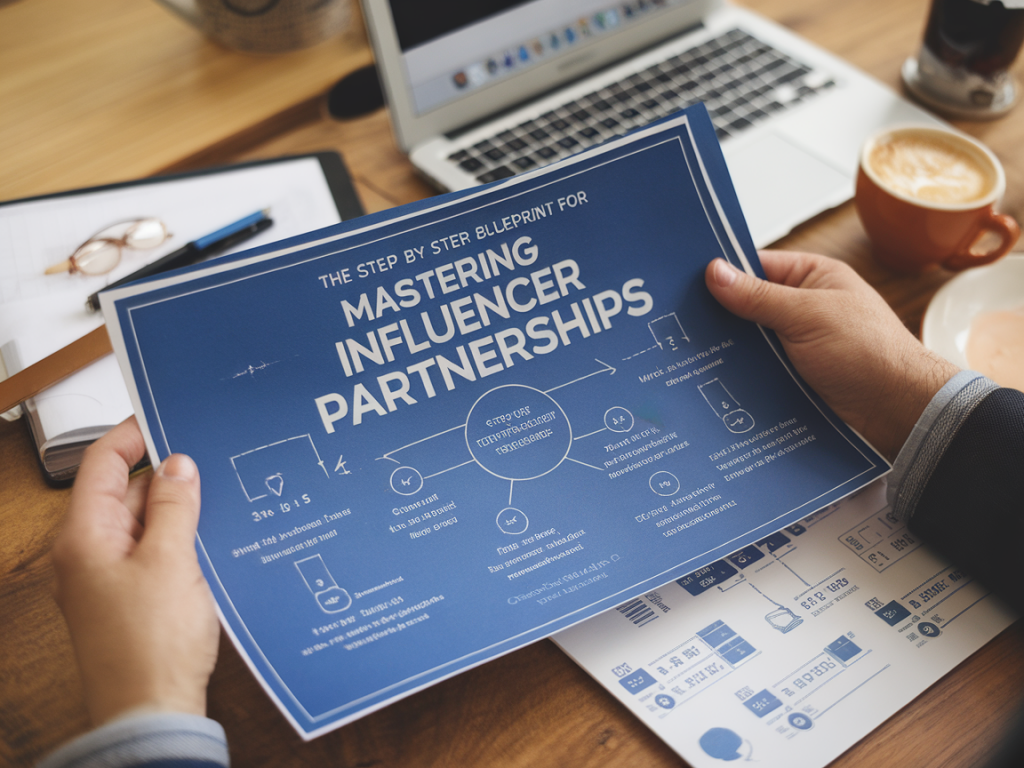
In today’s fast-paced digital landscape, influencer partnerships have emerged as a cornerstone of effective marketing strategies. Whether you're an entrepreneur launching a new product or a business looking to expand your reach, collaborating with the right influencers can help your brand establish credibility, connect with new audiences, and ultimately drive sales.
But here’s the thing: not all influencer partnerships are created equal. To truly harness the power of this marketing strategy, you need more than just a surface-level engagement. You need a roadmap that guides you through the intricacies of finding the right influencers, fostering authentic relationships, and measuring success effectively. Thankfully, that’s exactly what I’m here to share with you today—a step-by-step blueprint to mastering influencer partnerships.
Understand Your Objectives
Before diving headfirst into influencer outreach, it’s essential to get crystal clear on your objectives. What are you hoping to achieve? Increased brand awareness? Higher conversion rates? A boost in social media followers? Your goals will dictate the type of influencer you should partner with and the structure of your campaign. For instance:
- Brand awareness: Partner with influencers who have a broad yet engaged audience.
- Conversions: Micro-influencers or niche influencers tend to have highly targeted followings that are more likely to convert.
- Engagement: Choose influencers with an interactive and loyal community, regardless of their follower count.
Be specific about your KPIs. Instead of "increase sales," aim for "generate 500 new sales in the next quarter." This will make it easier to evaluate the success of your partnership later.
Identify the Right Influencers
Choosing the right influencer is arguably the most critical part of the process. It’s no longer just about massive follower counts—it’s about alignment and authenticity. Ask yourself the following questions when evaluating potential influencers:
- Does their audience align with my target demographic?
- Do their personal values and brand image complement mine?
- How engaged is their audience? (Look at likes, comments, and shares—not just followers.)
- Have they successfully collaborated with brands similar to mine in the past?
Tools like BuzzSumo, Collabstr, and even Instagram’s native insights can help you identify influencers within your niche. For a more personal touch, dive into platforms like LinkedIn to connect directly with influencers or their managers. Remember, quality > quantity. A micro-influencer with 10,000 highly engaged followers can often be more impactful than a mega-influencer with a million disconnected ones.
Craft a Winning Strategy
Now that you’ve identified the right influencers, it’s time to map out your collaboration. A successful partnership is built on mutual trust and clear expectations. Here’s how to make it work:
- Be transparent: Clearly outline your campaign goals, deliverables, and timelines. No one likes vague instructions.
- Provide creative freedom: Influencers know their audience best. While you may have specific talking points, allow them the flexibility to craft the message in their unique voice.
- Offer fair compensation: Depending on the influencer's reach and scope of work, compensation can range from monetary payments to gifted products or services. Don’t underestimate the value of offering fair pay—it fosters a stronger, more authentic collaboration.
For example, when Fitbit launched its Versa campaign, the brand didn't just focus on showcasing their product’s features. They collaborated with fitness and lifestyle influencers who demonstrated how the smartwatch seamlessly integrated into their daily lives. The result? Authenticity that resonated deeply with their audience.
Leverage Various Content Formats
One of the biggest advantages of influencer partnerships is the variety of content they can produce. Don't stick to just one type—expand into different formats to maximize engagement:
- Instagram Stories and Reels: Short, bite-sized videos are perfect for sneak peeks or tutorials.
- Blog posts: Great for in-depth reviews or step-by-step guides.
- Unboxing videos: These perform exceptionally well for new product launches.
- Giveaways: Collaborate on contests to boost engagement and increase reach.
Tailor your strategy to the influencer’s strengths. If they’re known for beautiful photography, lean into Instagram, whereas TikTok might suit more casual, humorous collaborations.
Prioritize Genuine Relationships
Here’s a pro tip: don’t treat influencer collaborations as one-and-done transactions. The most effective partnerships are long-term and built on trust. Make an effort to foster genuine relationships by:
- Engaging with their content outside of campaigns (comment, like, or share their posts).
- Providing them with exclusive access to your brand (e.g., early product launches or behind-the-scenes experiences).
- Being communicative and approachable throughout the partnership.
One brand that has nailed this is Glossier. Instead of working with traditional influencers, the beauty brand collaborates with their most loyal users (dubbed "Glossier Reps") to co-create content. This has cultivated an ecosystem of trust and advocacy that feels organic and authentic—and it works.
Track and Analyze Campaign Performance
Measurement is where the magic really happens. No matter how vibrant and exciting your influencer campaign may appear, it’s incomplete without data to back it up. Use tools like Google Analytics, Bitly, or UTM parameters to track leads, clicks, and conversions. Focus on these metrics:
- Reach: How many people did the campaign touch?
- Engagement: Are people liking, commenting, or sharing the content?
- Conversions: Did the campaign lead to tangible actions like purchases or sign-ups?
- ROI: Was the cost of the partnership justified by the results?
Don’t ignore qualitative feedback either. If your audience provides positive feedback about the collaboration or appears more engaged than usual, those are powerful wins that may not always show through numerical data.
Iterate and Improve
Even the most well-planned campaigns can have room for improvement. Post-campaign, take time to evaluate what worked and what didn’t. Were the influencers’ audiences the right fit? Did the content resonate as planned? Use these insights to refine future strategies and grow your influencer marketing acumen.
Influencer partnerships are, by nature, dynamic. Trends shift, platforms evolve, and audience behaviors change. But with a robust, data-backed approach, you’ll have the tools you need to turn every influencer collaboration into a powerful driver of growth for your brand.

